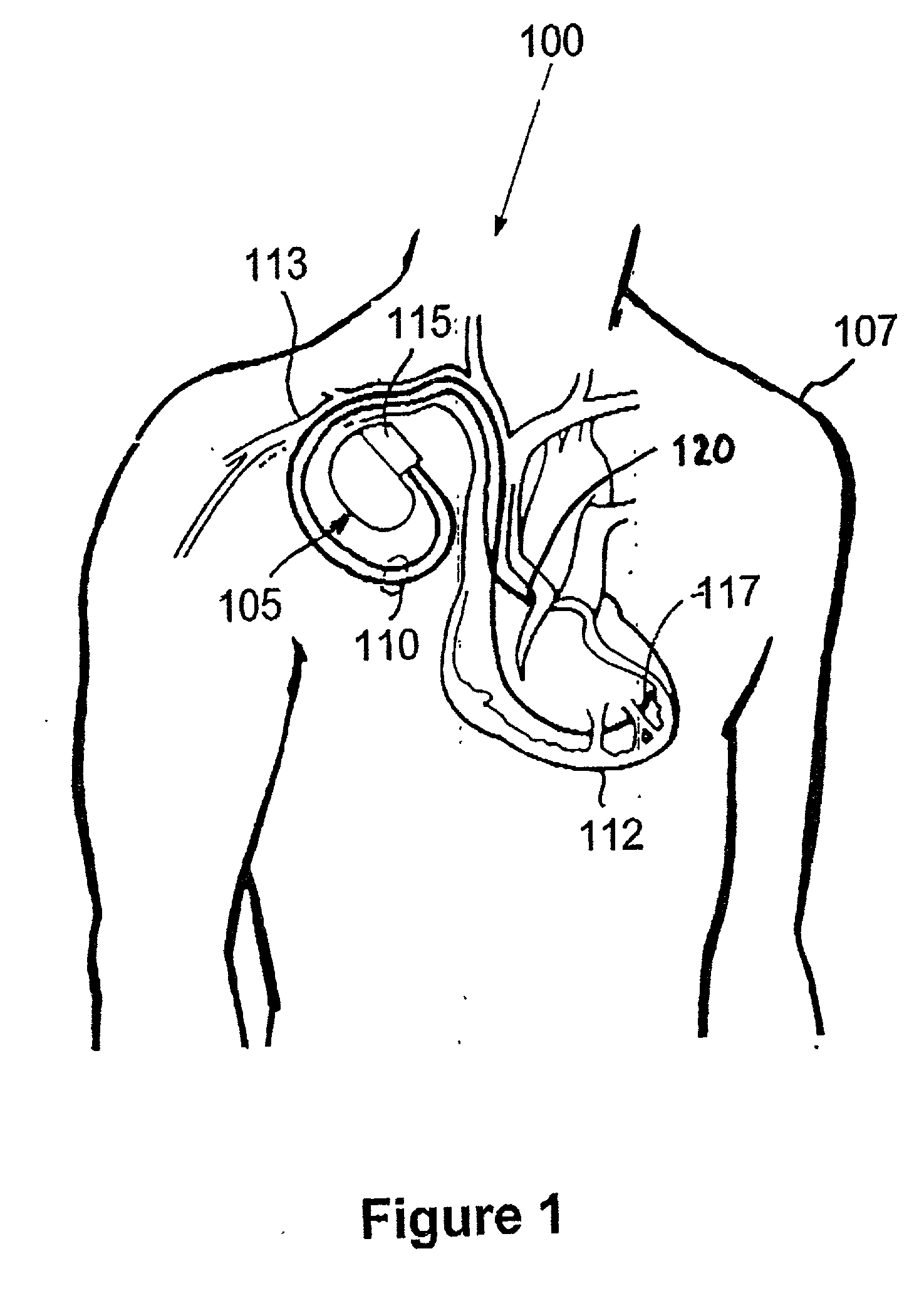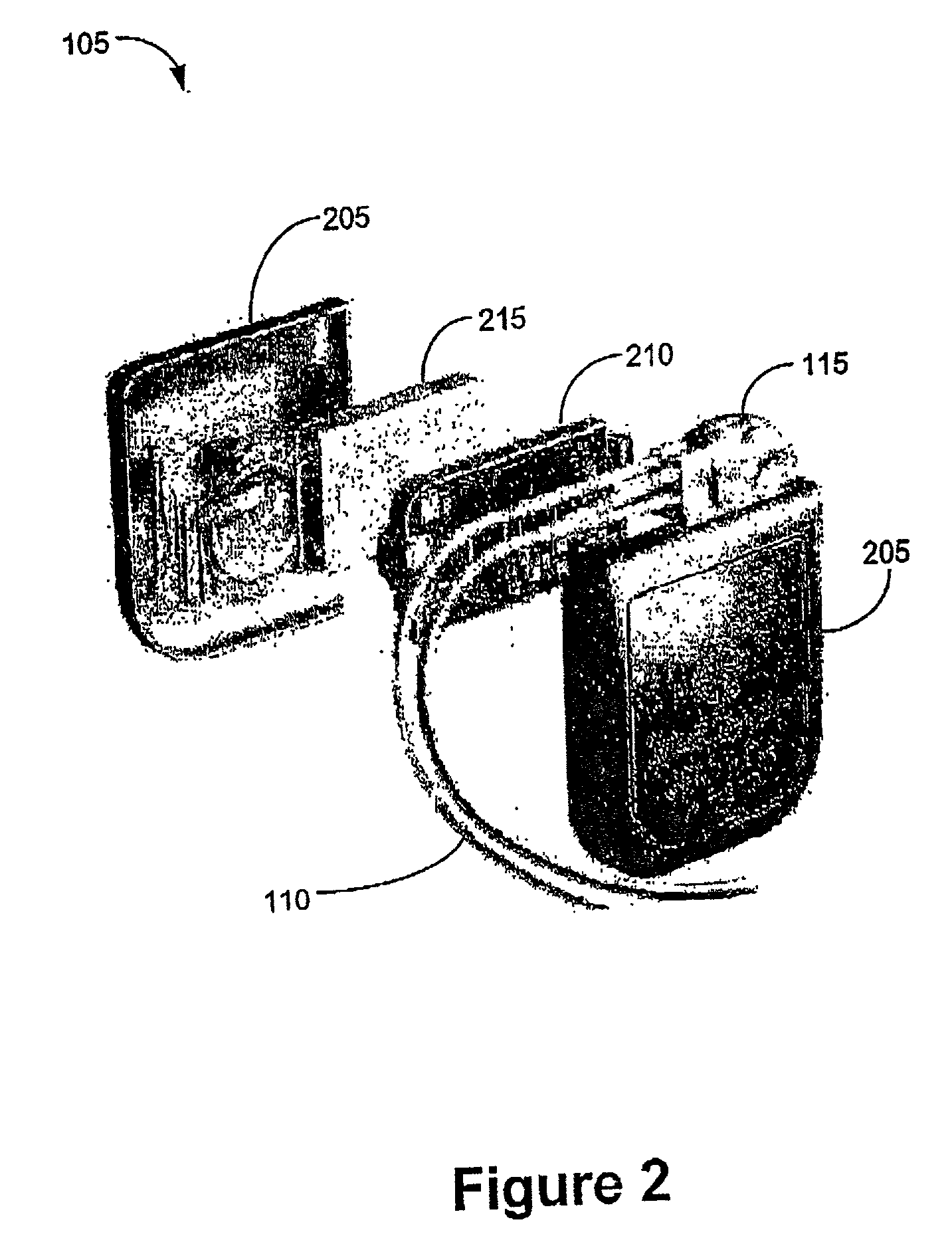Methods and apparatus for controlling a pacing system in the presence of EMI
a pacing system and emi technology, applied in the field of electronic and medical devices, can solve the problems of complex pacing systems, complex tasks, and complex tasks, and achieve the effect of accurately generating sense events and accurate generating sense events
- Summary
- Abstract
- Description
- Claims
- Application Information
AI Technical Summary
Benefits of technology
Problems solved by technology
Method used
Image
Examples
Embodiment Construction
and the preferred embodiments follow, after a brief description of the drawings, wherein additional advantages and features of the invention are disclosed.
[0028] This summary of the invention has been presented here simply to point out some of the ways that the invention overcomes difficulties presented in the prior art and to distinguish the invention from the prior art and is not intended to operate in any manner as a limitation on the interpretation of claims that are presented initially in the patent application and that are ultimately granted.
[0029] The invention may be understood by reference to the following description taken in conjunction with the accompanying drawings, in which the leftmost significant digit(s) in the reference numerals denote(s) the first figure in which the respective reference numerals appear, and in which:
[0030] FIG. 1 schematically illustrates one example of a pacing system in which the present invention can be implemented comprising a pacemaker impla...
PUM
 Login to View More
Login to View More Abstract
Description
Claims
Application Information
 Login to View More
Login to View More - R&D
- Intellectual Property
- Life Sciences
- Materials
- Tech Scout
- Unparalleled Data Quality
- Higher Quality Content
- 60% Fewer Hallucinations
Browse by: Latest US Patents, China's latest patents, Technical Efficacy Thesaurus, Application Domain, Technology Topic, Popular Technical Reports.
© 2025 PatSnap. All rights reserved.Legal|Privacy policy|Modern Slavery Act Transparency Statement|Sitemap|About US| Contact US: help@patsnap.com



